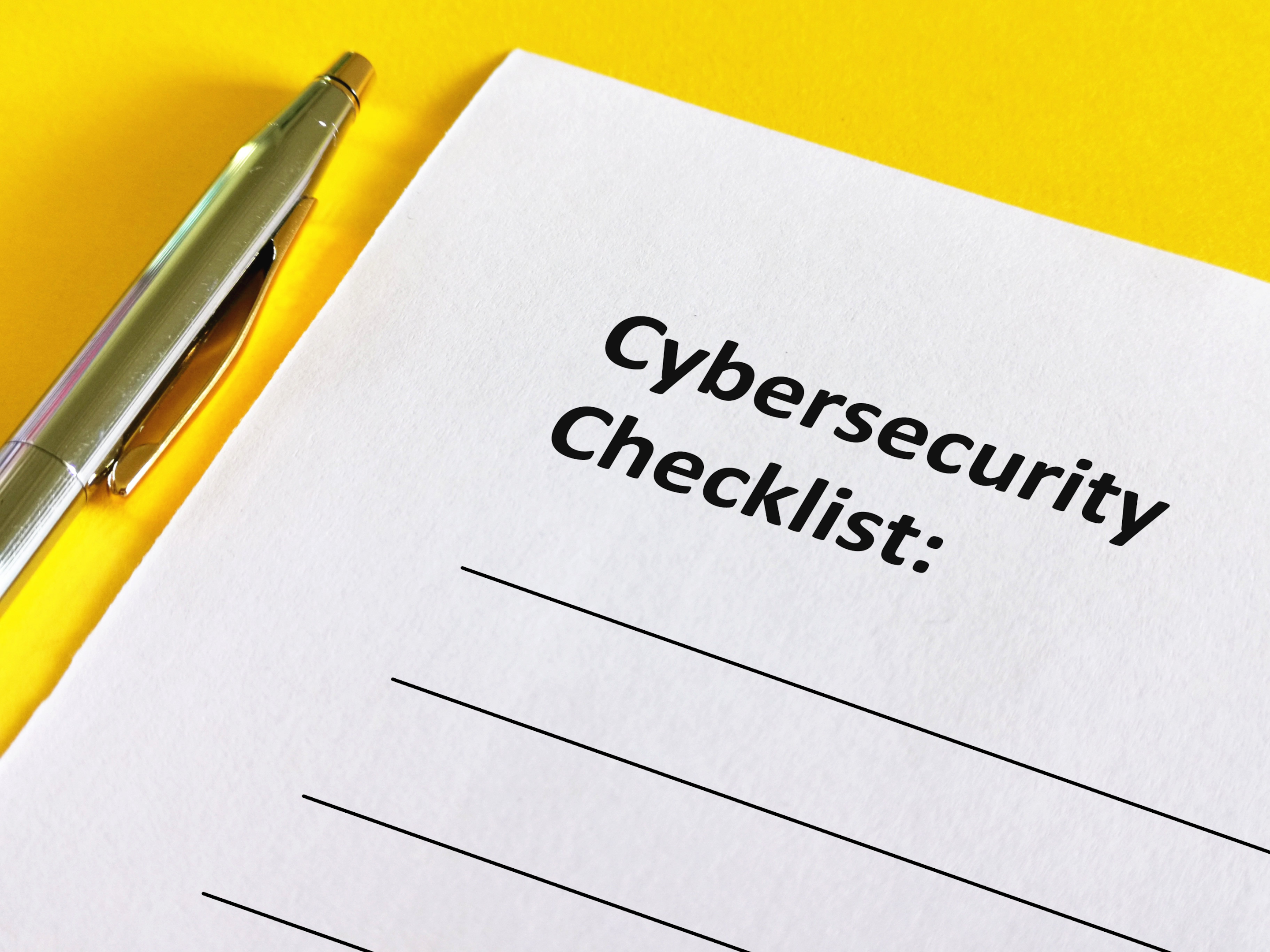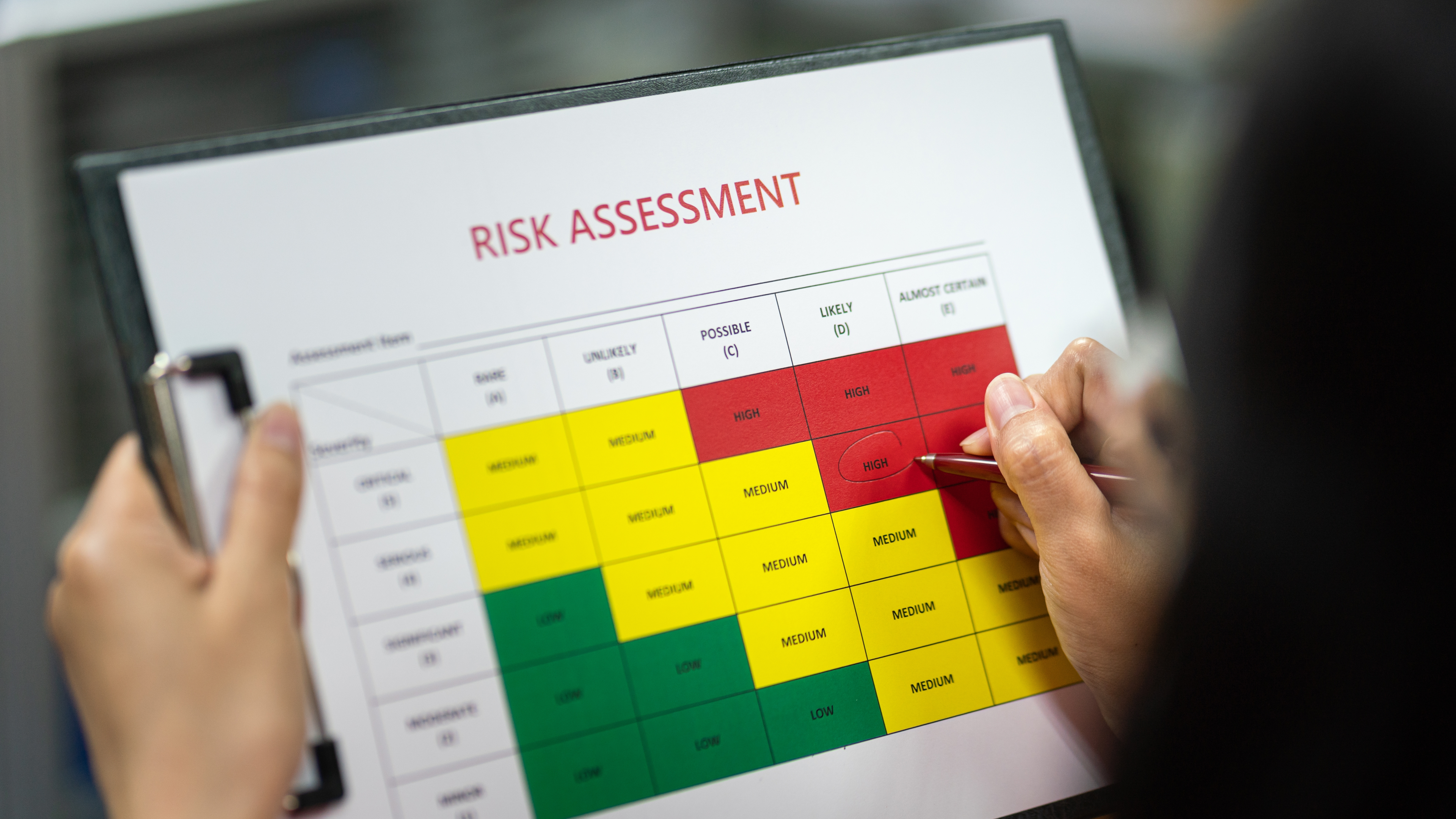An Essential Guide to Cyber Security Audit Checklist in 2023
In today’s interconnected world, cyber security is more crucial than ever. With the increasing number of cyber attacks and data breaches, businesses must stay vigilant and proactive in protecting their valuable assets. A comprehensive cyber security audit checklist plays a vital role in identifying and addressing potential risks, ensuring a robust security posture and compliance with regulations. In this blog post, we delve into the essentials of a cyber security audit checklist and discuss how it can help organizations stay ahead of emerging threats.
Key Takeaways
- An audit checklist is essential for risk management and provides a structured approach to assessing security measures.
- Regular audits detect vulnerabilities, ensure compliance with industry standards, and bolster credibility.
- Defining roles & responsibilities, creating a cyber security team & conducting vendor evaluations are all integral parts of effective cyber security practices.
The Importance of a Cyber Security Audit Checklist

A cyber security audit checklist serves as a valuable tool in helping businesses recognize, prioritize, and tackle potential risks, including cyber attacks. Regular risk assessments enable organizations to pinpoint security weaknesses, put in place effective security controls, and stay current with the latest security patches.
In addition, a thorough employee offboarding checklist allows businesses to create a comprehensive offboarding process for each departing employee, reducing the likelihood of human error and potential data breaches.
The Role of an Audit Checklist in Risk Management
In risk management, an audit checklist proves invaluable, providing a systematic method for evaluating and boosting an organization’s cyber security measures to safeguard company assets. By evaluating valuable assets such as:
- trade secrets
- customer data
- financial information
- intellectual property
businesses can prioritize risks and allocate resources efficiently.
This enables organizations to identify potential consequences of accidental human interference and recover company assets in case of unauthorized access.
Benefits of Regular Audits
Regular cyber security audits offer several advantages:
- They provide an overview of the organization’s security posture
- They detect vulnerabilities
- They ensure adherence to industry standards and regulations.
Keeping security measures current allows businesses to boost their credibility, reliability, and productivity, while also pinpointing potential financial losses and other repercussions of security breaches.
If you are looking on some more information on completing an annual risk assessment, check it out here:
https://plus1technology.com/the-importance-of-an-annual-risk-assessment/
Defining Roles and Responsibilities for Cyber Security

Clarifying roles and responsibilities for cyber security is vital to ensure accountability and collective ownership of security measures within the organization. By clearly allocating responsibilities, businesses can empower employees to analyze risks, implement security controls, and stay vigilant against cyber threats.
Furthermore, well-defined roles and responsibilities facilitate effective collaboration between departments, helping organizations to identify threats, assess risk, and implement security updates in a timely manner.
We understand that some small businesses have small leadership teams so those tasked with cyber security responsibility can be the executive leadership.
Creating a Cyber Security Team

Having a dedicated cyber security team in place can streamline efforts and ensure expertise in handling security issues. The team should be tasked with:
- Identifying and assessing risks
- Formulating and executing security policies and procedures
- Overseeing and responding to security incidents
- Providing security training and awareness
Equipping the team with the necessary skills and expertise allows organizations to bolster their security posture and be prepared for any potential vulnerabilities.
Collaboration Between Departments
Interdepartmental collaboration is essential for establishing a secure atmosphere. Fostering a culture of security consciousness encourages a proactive stance towards cyber security and ensures all departments are aware of potential risks.
Collaboration between departments can also help businesses optimize their organizational operations, as employees can share knowledge and work together to identify and address potential vulnerabilities.
Assessing and Prioritizing Assets

Assessing and prioritizing assets is essential for businesses to direct their security efforts towards the most valuable and critical resources. Understanding the importance of each asset enables organizations to distribute resources efficiently and mitigate the risk of financial losses and other potential consequences.
This process involves creating an asset inventory, categorizing and prioritizing assets, and identifying potential vulnerabilities to stay prepared for common threats.
Asset Inventory
Maintaining an up-to-date asset inventory is integral for successful risk management. An asset inventory includes identifying, tracking, and managing all hardware and software assets within an organization. It necessitates keeping a record of the location, users, maintenance and support, documentation, performance, licenses, compliance, cost, and lifecycle of the assets.
Regular updates of the asset inventory ensure that all assets are accurately accounted for, and any changes are properly documented.
Your MSP make have a platform in place to provide these lists and provide automated updates to these lists.
You can find out more about asset management and monitoring here: https://plus1technology.com/the-importance-of-asset-management-and-monitoring/
Categorizing and Prioritizing Assets
Categorizing and prioritizing assets based on their importance and potential impact is crucial for businesses to allocate resources efficiently. By assessing the value of assets, such as:
- trade secrets
- customer credit card data
- intellectual property
- sensitive personal information
Organizations can identify potential security risks and prioritize their efforts accordingly.
This process also helps businesses to understand the potential consequences of data loss and monetary loss, enabling them to take appropriate measures to safeguard their valuable assets.
If your business falls under any compliance standard it is critical to identify devices with PII, PHI, CUI, and any other personal or classified data.
Identifying and Analyzing Threats

Identifying and analyzing threats is crucial for businesses to understand the risks they face and develop appropriate countermeasures. Recognizing potential threats and their origins enables organizations to proactively address vulnerabilities and implement effective security controls.
This process also helps businesses to stay informed about the latest cyber attacks and data breaches, enabling them to adapt their security measures as the threat landscape evolves.
Common Cyber Threats
Familiarizing with common cyber threats can help businesses stay vigilant and prepared for potential attacks. Some common cyber threats include:
- Malware
- Phishing
- Ransomware
- Distributed Denial of Service (DDoS) attacks
By understanding these threats and their potential impact on the organization, businesses can prioritize their security efforts and implement the latest security patches and updates to minimize the risk of data breaches and other cyber security incidents.
Evaluating Threat Likelihood and Impact
Evaluating the likelihood and potential impact of threats helps businesses prioritize their security efforts and allocate resources effectively. By analyzing the potential damage that could be inflicted by a successful attack, estimating the probability of the attack occurring, and computing the cost of mitigating the threat, organizations can assign a priority level to each threat and focus their resources on the most critical risks.
This approach allows businesses to make informed decisions about where to invest their security resources and ensure that
Assessing Vulnerabilities and Implementing Security Controls
Assessing vulnerabilities and implementing security controls are crucial steps in identifying and addressing weaknesses in an organization’s systems and processes. Regular vulnerability assessments allow businesses to detect potential security weaknesses and implement effective security controls, thus reducing the risk of cyber attacks.
In addition, businesses should ensure that their security controls are regularly tested and updated to stay ahead of emerging threats and maintain a strong security posture.
Vulnerability Assessment Tools
Utilizing vulnerability assessment tools enables businesses to detect and remediate security weaknesses proactively.
It is a good idea to use a third party to assist with the cyber security assessment such as this one provided by Plus 1 Technology: https://plus1technology.com/csra/
These specialized software programs or platforms scan systems, networks, and applications for potential threats, helping organizations identify existing and potential vulnerabilities.
Choosing tools tailored to their needs, which provide comprehensive coverage of their network and systems, is crucial for businesses.
Selecting and Implementing Security Controls
Selecting and implementing appropriate security controls, such as access control, authentication, and encryption, helps businesses strengthen their defenses and minimize the risk of breaches. It is important for organizations to evaluate their risk profile, potential threats, budget, and desired security level when determining the most suitable security controls.
Moreover, businesses should ensure that the security controls they select are properly configured, deployed, and regularly tested and updated.
Monitoring and Reviewing Cyber Security Measures

Monitoring and reviewing cyber security measures is essential for businesses to remain proactive against evolving threats and ensure a secure environment. This process involves regularly reviewing security policies and procedures, conducting vulnerability scans, and incorporating automated security tools.
Companies should consider engaging with an MSP that can offer 24/7/365 monitoring of their environments.
Staying vigilant and adapting to the evolving threat landscape enables businesses to maintain a strong security posture and stay ahead of emerging cyber threats.
Network Monitoring and Logging
Implementing network monitoring and logging tools, such as network performance monitoring and log management software, helps businesses detect and respond to threats in real-time. These tools continuously observe and analyze the performance and security of a network, enabling organizations to identify and address potential issues before they become serious.
In addition, network monitoring and logging tools can help businesses optimize their security posture by providing visibility into their network and systems.
Regular Security Reviews and Updates
Regular security reviews and updates help businesses adapt to the evolving threat landscape and maintain compliance with regulations. By continually reviewing and updating security policies and procedures, performing regular vulnerability scans, and implementing the latest security patches and updates, organizations can stay ahead of emerging threats and maintain a robust security posture.
Moreover, regular security reviews, along with infrastructure review documentation, can help businesses identify potential compliance issues and ensure that they are adhering to industry standards and regulations.
Employee Training and Awareness

Employee training and awareness are crucial for fostering a culture of security and minimizing the risk of human-related breaches. Providing employees with cybersecurity safety training and best practices empowers the workforce to recognize risks, respond correctly to incidents, and cultivate a security-focused culture.
In addition, employee training and awareness programs can help organizations stay informed about the latest cyber attacks and data breaches, enabling them to adapt their security measures as the threat landscape evolves.
Developing a Cyber Security Training Program
Developing a comprehensive cyber security training program equips employees with the knowledge and skills to identify and respond to threats. A successful training program should include:
- An understanding of the fundamentals of cyber security
- The ability to identify common cyber threats
- A plan of action for responding to cyber security incidents
In addition, businesses should consider utilizing various delivery methods for cyber security training, such as online courses, in-person training sessions, and simulations, to ensure that employees receive the most effective and engaging training experience.
Reinforcing Security Awareness
Reinforcing security awareness through ongoing training and communication is essential for maintaining a strong security culture within the organization. By providing employees with regular updates on the latest cyber threats and optimal security practices, organizations can ensure that their workforce remains vigilant and informed.
Moreover, continuous communication and training can help employees understand their role in safeguarding the organization’s data and systems, ultimately reducing the likelihood of human-related breaches.
Learn more about the human risk of cyber security here:
Third-Party Vendor Security Evaluation

Evaluating third-party vendor security is essential for businesses to minimize the risk of breaches resulting from weak links in their supply chain. Conducting thorough evaluations of vendors’ security practices helps businesses to verify compliance with their own standards and protect their sensitive data from potential risks.
This process involves:
- Conducting vendor risk assessments
- Establishing security requirements and expectations
- Monitoring and assessing vendor security to stay apprised of any changes in the vendor’s security posture.
Vendor Risk Assessment
Conducting vendor risk assessments is an important step in identifying potential security weaknesses in partners’ systems and processes. By assessing the associated risks and evaluating the vendor’s security controls, businesses can gain visibility into the risks and make informed decisions to mitigate them.
Regular vendor risk assessments also help businesses ensure that their vendors abide by their security policies and that their sensitive data is safeguarded.
Establishing Security Requirements and Expectations
Establishing clear security requirements and expectations for vendors ensures that they maintain a strong security posture and adhere to best practices. By defining the necessary security controls, risk assessments, and security updates, businesses can ensure that their vendors are equipped to safeguard sensitive data and comply with regulatory requirements.
Moreover, setting clear expectations with vendors helps to form a shared understanding of the importance of cyber security and fosters a collaborative relationship in maintaining security standards.
Summary
In conclusion, a comprehensive cyber security audit checklist is essential for businesses to identify, prioritize, and address potential risks, ensuring a strong security posture and compliance with regulations. By defining roles and responsibilities, assessing and prioritizing assets, identifying and analyzing threats, assessing vulnerabilities, implementing security controls, and monitoring and reviewing cyber security measures, organizations can stay ahead of emerging threats and maintain a robust security posture. Remember, a proactive approach to cyber security and a culture of continuous learning and improvement are the keys to staying one step ahead in the ever-evolving cyber threat landscape.
Frequently Asked Questions
How do you conduct a cybersecurity audit?
To conduct a cybersecurity audit, one must review security policies and procedures, assess potential threats, and document findings and recommendations. Additionally, an external and internal security audit should be conducted to evaluate IT infrastructure (networks, software, and hardware) and vulnerabilities, as well as physical security practices and sensitive data storage and protection.
What are the 5 essential elements of cyber security?
The five essential elements of cyber security are Identify, Protect, Detect, Respond and Recover, forming a successful Cybersecurity Framework to safeguard critical infrastructure services, detect vulnerabilities, respond appropriately and recover operations.
How do you conduct a NIST audit?
A NIST audit can be conducted by following a checklist that guides you through the 4 steps of familiarizing yourself with data, mapping permissions and access, bolting access controls, and creating systems and controls to monitor compliance on an ongoing basis.
What does a good offboarding process look like?
A good offboarding process should include steps such as the return of company-issued resources, revocation of access rights, and paperwork preparations. It is important to ensure that sensitive data stays private and secure, and other team members are provided with the necessary support. The offboarding process helps complete the employee lifecycle in a structured way.
What is the purpose of a cyber security audit checklist?
A cyber security audit checklist enables businesses to identify and mitigate potential risks, ensuring a secure posture and compliance with regulations.






